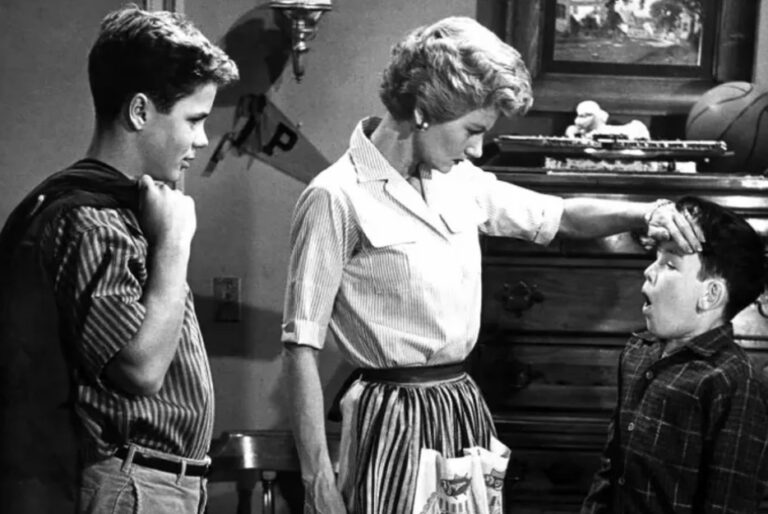If the world mirrored the values of *Leave It to Beaver*, it would undoubtedly be a much better place.
Yet, even the most cherished shows have their imperfections. *Leave It to Beaver* had its share of flaws and intriguing behind-the-scenes quirks that often go unnoticed.
Setting a high standard is essential.

Though *Leave It to Beaver* centered around a fictional family, it set a standard of basic decency that resonated deeply with American audiences, a standard that has since been difficult to replicate as other television series have gradually declined in quality. Running from 1957 to 1963, this beloved sitcom became a symbol of ideal family values and wholesome humor.
Simply put, the show was well-written and highly entertaining, charming viewers with its relatable scenarios and lighthearted tone. Now, let’s take a look at some amusing moments that weren’t meant to make it on air—bloopers and goofs that slipped through the cracks. One scene, in particular, caught me by surprise, as it featured an unexpected blooper that somehow avoided the cutting room floor.
Take, for instance, June Cleaver’s calendar…

One particularly amusing error, which many viewers may not have noticed, involves June Cleaver’s calendar. The Cleaver household was always portrayed as the pinnacle of good housekeeping, and no well-organized home would be complete without a calendar to keep track of important events. June Cleaver, of course, had one hanging on the wall—but it seems that the production team forgot to update it.
Sharp-eyed fans may spot that in the 1963 episode “The Poor Loser,” June’s calendar displays incorrect dates. It’s likely that they were using a 1961 calendar, which means the dates didn’t align with the actual year.
That wasn’t the only oversight in the episode. Ward and Beaver plan to attend a baseball game, and in a close-up shot of the tickets, you can spot a notable misspelling: “Mayfield” is written as “Mayfied” in the smaller print, even though it’s correct in the larger font.
And then there’s the lesser-known detail about June Cleaver herself: her hidden scar…

Barbara Billingsley, beloved for her role as June Cleaver, became an icon as the impeccably dressed mother who could sweep the living room floor in high heels and pearls. Her portrayal of a calm and respectful parent set a new standard for family-friendly sitcoms, and her polished demeanor became instantly recognizable.
Yet, there was more to June’s signature look than met the eye. Billingsley wore her signature pearls to cleverly conceal a surgical scar at the base of her neck. The high heels, meanwhile, served a practical purpose: they helped maintain height balance as her on-screen sons, Jerry Mathers and Tony Dow, grew taller.
As for the dynamic between Jerry Mathers (Beaver) and Tony Dow (Wally), they reportedly had a great relationship on set. Despite their on-screen sibling bickering, the two got along very well in real life and remained close friends throughout the show’s run and beyond. Their bond was a key part of the show’s lasting charm, as they naturally embodied the brotherly connection that resonated with audiences.

Analyzing photos from the *Leave It to Beaver* set reveals the undeniable bond between Tony Dow and Jerry Mathers.
In a 2006 interview with the Television Academy Foundation, Jerry Mathers shared, “Wally is the perfect big brother. He’s a champion basketball and football player. He excels at everything he does—he’s a big letterman and consistently gets A’s on his papers. Everyone loves him.”
Toilet on screen.

*Leave It to Beaver* was groundbreaking in many ways. One of its standout features was its focus on children’s perspectives, allowing viewers to connect with the characters on a more profound level. Another notable aspect was its ability to highlight the everyday realities of family life.
This was most famously illustrated in an episode where Wally carried a toilet seat, marking a significant moment in television history.
Even though only the tank was visible, it represented one of the earliest instances of a restroom being depicted on screen. In the 1950s, networks were extremely hesitant to show bathrooms on television, let alone actual toilets.
The post Hidden Goofs and Bloopers in Leave It to Beaver appeared first on The Best Media.




